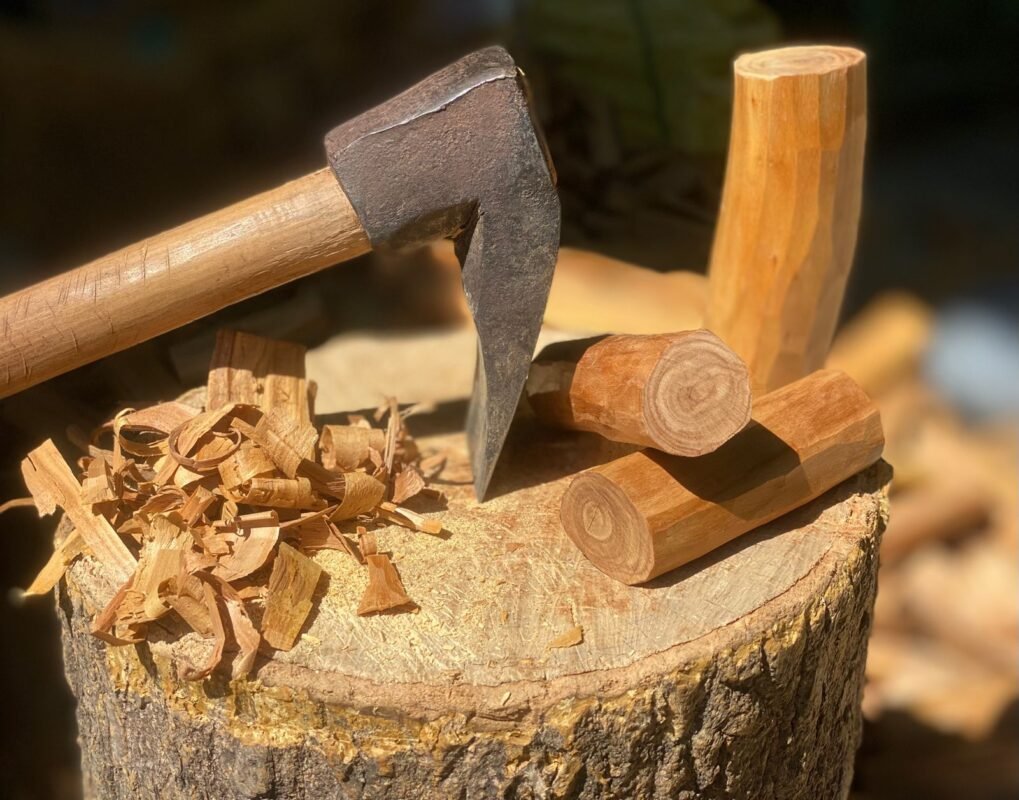How to Identify Sandalwood Powder ?

SMELL TEST
- Pure sandalwood powder has a rich, woody, and slightly sweet fragrance. If the scent is overpowering, sharp, or unpleasantly sweet, it may indicate adulteration.
TEXTURE TEST
- Genuine sandalwood powder is typically fine and soft to the touch. If it feels coarse or gritty, it may be low quality or contaminated.
VISUAL INSPECTION
- Genuine sandalwood powder typically has a light brown to beige color. If the color appears artificially brightened or uneven, it may indicate adulteration (mixwood/sapwood).
CERTIFICATE
- Look for labels or certifications from reputable organizations such as ISO or the Indian government’s certification mark, which ensure quality and authenticity.
PRICE TEST
- Be wary of extremely cheap sandalwood powder. High-quality sandalwood powder can be expensive due to the rarity and quality of the trees. Generally, 1 kg of pure sandalwood heartwood costs around ₹12,000–20,000 per kg.
How to Identify Sandalwood Stick?

SMELL TEST
- Original sandalwood has a very mild, natural fragrance—it does not overwhelm the senses. Warning: If the log gives off an unnaturally strong or perfumed smell, it may be artificially scented or fake wood.
SANDPAPER TEST
- If the aroma fades with time, gently rub the surface of the stick with sandpaper or chop slightly with a knife. Original sandalwood will immediately regain its natural fragrance once the fresh inner layer is exposed (note—the fragrance will be very mild). In the case of fake sandalwood or sapwood, the aroma will not return, or it will remain extremely weak
TEXTURE TEST
- If you still have doubts about authenticity, break the log from the middle. Original sandalwood shows the same uniform golden-brown color throughout, from surface to core. If the inside color looks different or doesn’t match the outer surface, it means the log has been artificially colored and is fake.
BURNING TEST
- Take a sandalwood log and burn it slightly from the edge. Original sandalwood releases a pleasant, rich, and soothing aroma when burned. If the log is fake or a duplicate, it will not produce any aroma or may give off a strange burnt-wood smell.
PRICE TEST
- High-quality sandalwood is expensive due to the rarity and quality of the trees. Generally, 1 kg of pure sandalwood heartwood costs around ₹12,000–20,000 per kg.
How to Identify Sandalwood Oil
With the rising demand for sandalwood oil, adulteration and counterfeit products have become common. Here are some methods to verify the authenticity and quality of sandalwood oil.
Visual Inspection
- Genuine sandalwood oil typically has a pale yellow to golden color.
Smell Test
- Pure sandalwood oil has a rich, woody, and slightly sweet fragrance. If the scent is overpowering, sharp, or unpleasantly sweet, it may indicate adulteration.
Consistency Test
- Genuine sandalwood oil is typically thick and viscous. If it’s too runny or watery, it may be diluted or adulterated.
Price Test
- Be wary of extremely cheap sandalwood oil. High-quality sandalwood oil can be expensive due to the rarity and quality of the sandalwood trees.
Labeling and Certification
- Check for labels or certifications from reputable organizations, such as the International Organization for Standardization (ISO) or the Indian government’s certification mark.
GC/MS Test
- Gas Chromatography/Mass Spectrometry (GC/MS) testing can analyze the chemical composition of the oil. This test can detect adulteration and verify the oil’s authenticity.
Solubility Test
- Mix a few drops of sandalwood oil with an equal amount of ethanol or jojoba oil. If the mixture is cloudy or separates, it may indicate adulteration.
Flash Point Test
- The flash point of genuine sandalwood oil is typically around 150°C to 160°C. If the flash point is significantly lower, it may indicate adulteration.
